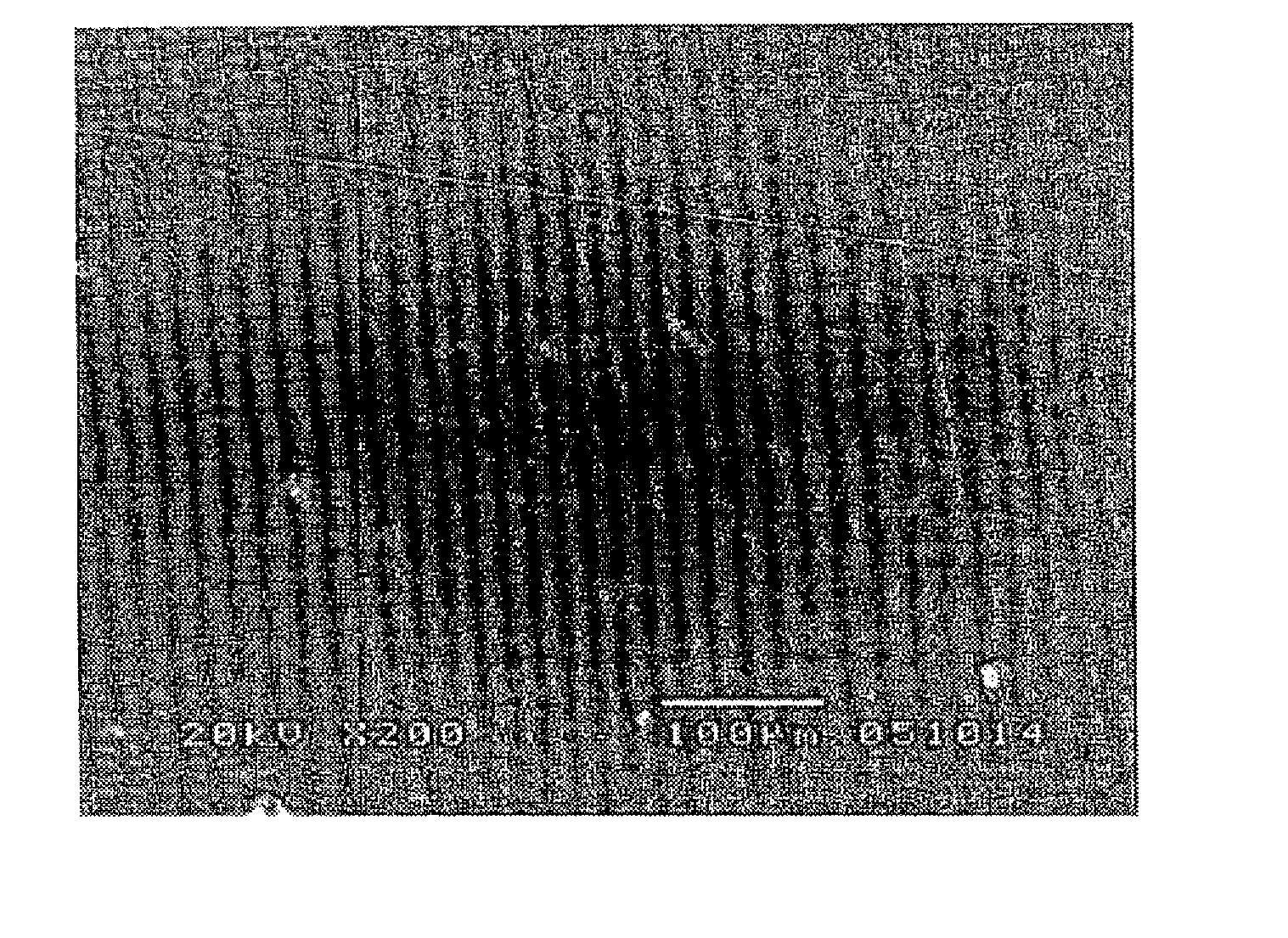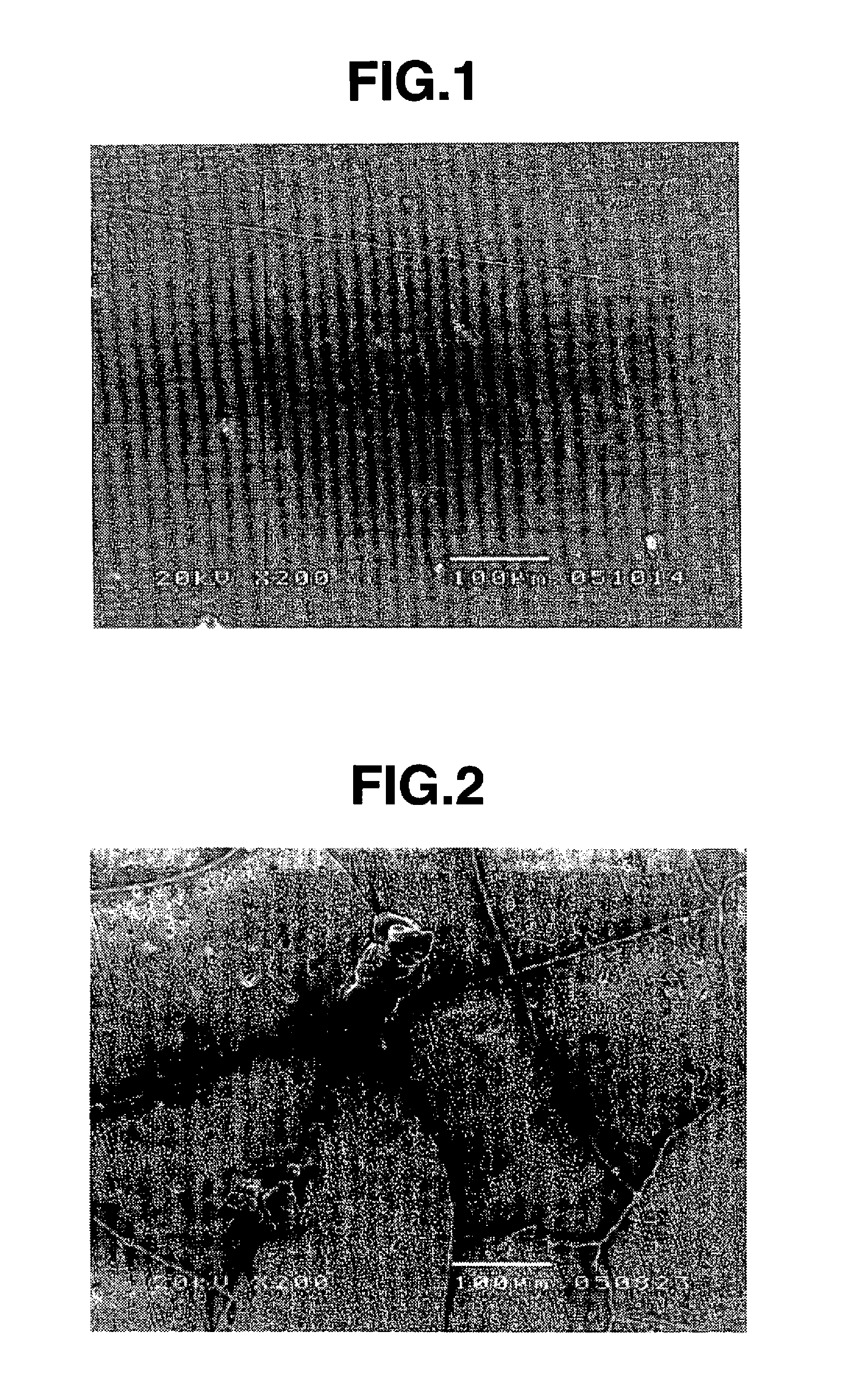Corrosion resistant member
- Summary
- Abstract
- Description
- Claims
- Application Information
AI Technical Summary
Benefits of technology
Problems solved by technology
Method used
Image
Examples
example 1
[0040] An aluminum alloy substrate of 20 mm by 20 mm at its surface was degreased with acetone and roughened with corundum abrasives. By using an atmospheric plasma spraying equipment and feeding a gas mixture of argon gas and hydrogen gas in a volume ratio of 9:1 as a plasma gas, yttrium fluoride powder was sprayed onto the substrate at a power of 40 kW, a spray distance of 100 mm, and a rate of 30 μm / pass to form a coating of 200 μm thick.
[0041] The sprayed coating surface was examined for sodium and potassium by glow-discharge mass spectrometry using a glow-discharge mass spectrometer model VG9000 (Thermo Electron Corp.), finding 2 ppm of sodium and 1 ppm of potassium. A reflection electron image in cross section of the sprayed coating was analyzed and made binary by image analysis software Scion Image, from which a porosity of 2.8% was computed as a proportion of pore surface area relative to the overall surface area.
[0042] The spray coated sample was masked with polyimide tap...
example 2
[0044] Thermal spraying and evaluation were performed as in Example 1 aside from using dysprosium fluoride as the spray powder. The results are also shown in Table 1. The sprayed coating surface had 3 ppm of sodium and 2 ppm of potassium. The porosity was 4.5%.
example 3
[0045] Thermal spraying and evaluation were performed as in Example 1 aside from using gadolinium fluoride as the spray powder. The results are also shown in Table 1. The sprayed coating surface had 2 ppm of sodium and 3 ppm of potassium. The porosity was 3.3%.
PUM
| Property | Measurement | Unit |
|---|---|---|
| Surface roughness | aaaaa | aaaaa |
| Length | aaaaa | aaaaa |
| Length | aaaaa | aaaaa |
Abstract
Description
Claims
Application Information
 Login to View More
Login to View More - R&D
- Intellectual Property
- Life Sciences
- Materials
- Tech Scout
- Unparalleled Data Quality
- Higher Quality Content
- 60% Fewer Hallucinations
Browse by: Latest US Patents, China's latest patents, Technical Efficacy Thesaurus, Application Domain, Technology Topic, Popular Technical Reports.
© 2025 PatSnap. All rights reserved.Legal|Privacy policy|Modern Slavery Act Transparency Statement|Sitemap|About US| Contact US: help@patsnap.com


